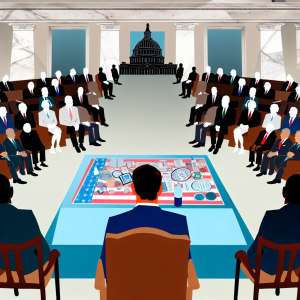Federal Reserve Chair Jerome Powell’s upcoming testimony before Congress is shaping up to be a pivotal moment for monetary policy—and a revealing window into the growing political pressures influencing the Fed’s traditionally insulated decision-making process. As Powell heads to Capitol Hill this week, investors and advisors alike should pay close attention, because what unfolds could signal a shift not just in interest rates but in the very dynamics that govern U.S. monetary policy.
Political Winds Stirring the Fed’s Calm Waters
Historically, Federal Open Market Committee (FOMC) meetings and Powell’s congressional testimonies have been relatively free from overt political interference. Yet, the current environment is markedly different. President Donald Trump and several White House officials have ramped up calls for immediate rate cuts, creating a charged atmosphere that even Fed officials appointed by Trump are responding to. Fed Governors Michelle Bowman and Christopher Waller recently hinted at the possibility of easing policy as soon as July, a notable departure from Powell’s more patient stance.
Mohamed El-Erian, Allianz’s chief economic advisor, captured the mood succinctly: “There’s some political influence starting to come into the FOMC.” This is a critical observation because it suggests the Fed’s protective “politics-free” shield is thinning, which could have profound implications for market stability and investor confidence.
What This Means for Investors: Navigating Uncertainty
The market is already pricing in these signals. According to CME Group’s FedWatch tool, there’s now a 23% probability of a rate cut in July and an 82% chance of one by September. This shift in expectations underscores a broader trend of growing anticipation for monetary easing amid concerns about slowing economic growth and tariff-related uncertainties.
But here’s the kicker: Trump’s calls for dramatic cuts—up to two percentage points—are not just unrealistic; they could be counterproductive. When the Fed cut rates by a full percentage point late last year, Treasury yields paradoxically rose as investors bet on stronger growth and inflation. This illustrates the complex and sometimes counterintuitive market reactions to Fed moves.
The Fed’s True Mandate: Inflation and Employment, Not Politics
Jai Kedia, a research fellow at the Cato Institute, emphasizes a crucial point often lost in the political noise: The Fed’s mandate is to stabilize inflation and employment, not to manage federal borrowing costs or cater to political demands. If the Fed strays too far into politically motivated rate cuts, it risks undermining both economic stability and its own credibility.
For investors and advisors, this means staying grounded in fundamentals. Rate cuts driven by politics rather than economic data could lead to volatility and mispriced risk. Instead, focus on the underlying economic indicators—like inflation trends, labor market strength, and consumer spending—to guide investment decisions.
What Should Advisors and Investors Do Differently Now?
-
Prepare for Volatility: With political pressures influencing Fed signals, markets may react more sharply to Fed communications and economic data releases. Advisors should counsel clients to expect and tolerate short-term volatility while maintaining long-term investment discipline.
-
Monitor Inflation Data Closely: Since inflation remains central to Fed decisions, investors should track inflation metrics like the Consumer Price Index (CPI) and Personal Consumption Expenditures (PCE) index. A sustained rise or fall in inflation could tip the scales on rate moves.
-
Diversify with Defensive Assets: Given the uncertainty around the timing and magnitude of rate cuts, diversifying into sectors less sensitive to interest rate swings—such as consumer staples and utilities—can help cushion portfolios.
- Watch Fed Leadership Changes: With Bowman and Waller being potential successors to Powell, their policy leanings could shape future Fed direction. Staying informed about Fed appointments is crucial for anticipating shifts in monetary policy.
Looking Ahead: What’s Next for the Fed and Markets?
The political tug-of-war surrounding the Fed could intensify as the 2025 midterm elections approach, potentially increasing volatility. However, the Fed is unlikely to capitulate to demands for sweeping rate cuts without clear economic justification. Instead, a measured approach—likely starting with modest cuts in the fall—seems most probable.
As a unique data point, consider that historically, the average rate cut cycle since 1980 has involved reductions totaling about 1.5 percentage points over several months, not the abrupt 2-point slashes being demanded now. This historical context should temper expectations for dramatic Fed action and encourage investors to look beyond headline noise.
Final Takeaway
The Fed’s upcoming testimony is more than a routine policy update; it’s a litmus test for how political pressures might reshape U.S. monetary policy. Investors and advisors must navigate this evolving landscape with a blend of vigilance, skepticism toward politically driven market narratives, and a steadfast focus on economic fundamentals. By doing so, they can better position portfolios to weather the uncertainties ahead and capitalize on opportunities as the Fed charts its next course.
For those looking to stay ahead, continuous monitoring of Fed communications, inflation data, and political developments is essential. The intersection of politics and monetary policy is no longer a distant concern—it’s a current reality shaping the investment horizon.
Source: Powell speaks on Capitol Hill this week with politics front and center

